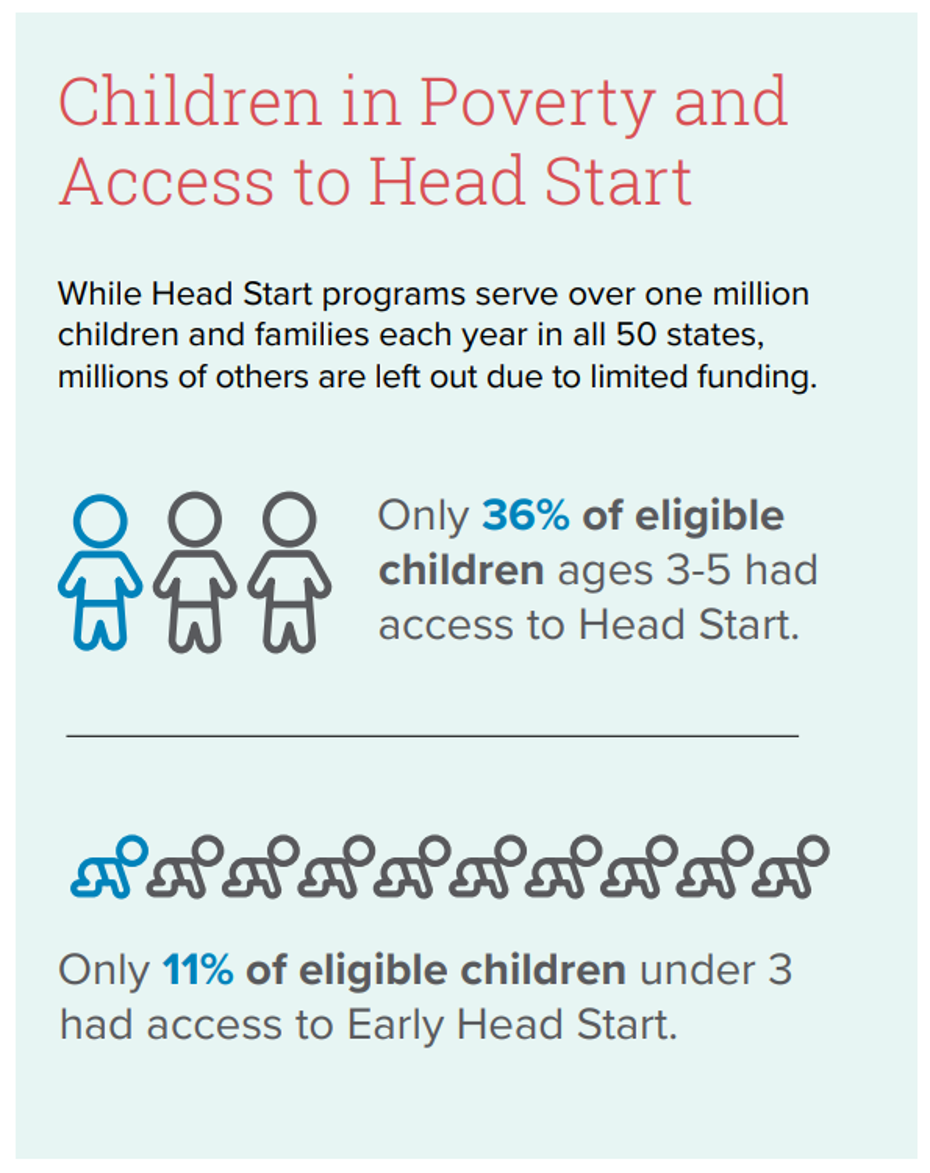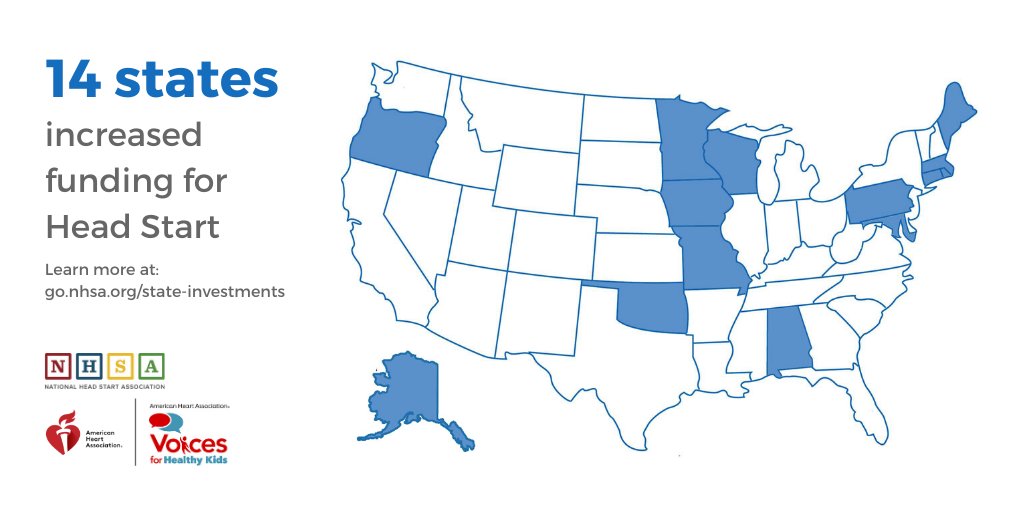
Share On Social!
Communities are increasingly concerned about the rise of poverty, homelessness, trauma, and opioids among children and families.
However, few states address these issues by investing money in Head Start programs, which are proven to strengthen families, promote school readiness, and improve child health.
The good news is that lawmakers in 14 states are investing over $400 million each budget cycle for local Head Start and Early Head Start programs, according to a new analysis by the National Head Start Association and Voices for Healthy Kids.
These investments will help serve more kids─but millions are still left out.
Crisis of At-Risk Children and Families
Many children and families face difficult situations:
- persistent childhood poverty
- the unrelenting opioid crisis; over 48,000 Americans overdosed in 2017
- rising rates of foster care in 39 states
- family homelessness
- immigration status
- lack of access to early care and education; only 36% of eligible children ages 3-5 had access to Head Start, and only 11% of eligible children younger than 3 had access to Early Head Start
- other adverse childhood experiences (ACEs)
These situations set families back and add barriers on their path to health and success.
Childhood trauma and ACEs are a particular burden.
Experiencing trauma─like parental substance use disorder, poverty, and homelessness─in the first five years of life can set off a vicious cycle of inequities. These inequities include obesity, stress, and developmental problems that affect adulthood and future generations, and are more pronounced for Latinos.
“The opioid crisis has contributed to new cases of childhood trauma — a condition already greater than two times more elevated among children living in poverty,” according to a Medium post from the National Head Start Association.
Head Start is a Ready-Built Solution for Targeted State Investment
Head Start is proven to help children and families overcome trauma and other barriers.

High-quality childcare serves as both prevention and treatment for substance use disorder and other ACEs, due to their expertise in tailoring their programs to meet complex community needs.
They also require minimal additional oversight, as they already comply with rigorous federal performance and budget standards.
Head Start also offers home visiting and has experience in partnering with childcare programs.
In a recent program year, Head Start programs served 132,000 children with disabilities, 26,000 children in foster care, and 47,000 children experiencing homelessness, according to the analysis.
Families in Early Head Start have more positive parent-child relationships, more stable and healthy homes, and less child welfare involvement.
Head Start participants are 12% less likely to live in poverty as adults and 29% less likely to receive public assistance.
However, only 36% of eligible children ages 3-5 had access to Head Start, and only 11% of eligible children under 3 had access to Early Head Start.
It’s Time for States to #UniteforHeadStart
Head Start and Early Head Start programs are ready to partner with states to meet the needs of at-risk children and families and help them reach their potential.
 But fewer than 30% of states invest in Head Start.
But fewer than 30% of states invest in Head Start.
States don’t need to set up a brand-new state program. They can leverage Head Start to help vulnerable children and families.
In the analysis of 14 states that do invest in Head Start: two states match federal support of Head Start programs; three states invest in improving quality of Head Start programs; and nine states invest in expanding access to Head Start programs.
For example:
- Minnesota, due to a lack of high-quality infant and toddler care throughout the state, invests just over $25 million each year ($50 million over two years) to expand access to Early Head Start (and Head Start) for at-risk children, including tribal and rural communities.
- Maryland has committed $3 million with a focus on expanding the number of hours and days children are able to access Head Start.
- Missouri lawmakers recently dedicated $12 million in state funding to support higher teacher salaries. The money also helps programs meet their federally required 20% funding match.
Eleven states support Head Start through general funds; and three states access other revenue:
- Maine directs a portion of their tobacco settlement funds to support Head Start:
- Oklahoma invests in Head Start through their Department of Commerce budget.
- Oregon lawmakers issued a new business sales tax to fund new education investments.
What Can You Do to Promote Head Start?
Use this social media press kit to share the new Head Start analysis with child health advocates in your state to push for state investment in Head Start.
Reach out to and remind elected officials of the critical role that Head Start plays in your community. For example, invite your members of Congress to local community events or schedule an in-district meeting.
If you are a Head Start graduate or parent of a Head Start student, you have an important role to play in securing that the window of opportunity remains open for other children. Join the Alumni Network and gain access to tools to learn how to powerfully tell your Head Start story and advocate on behalf of Head Start in the media, with elected officials and in your own community.
You can also download a Salud America! Health Equity Report Card to find out the rate of Head Start facilities per 10,000 children under age 5 in your area, as well as other local education and school data!
By The Numbers
142
Percent
Expected rise in Latino cancer cases in coming years



